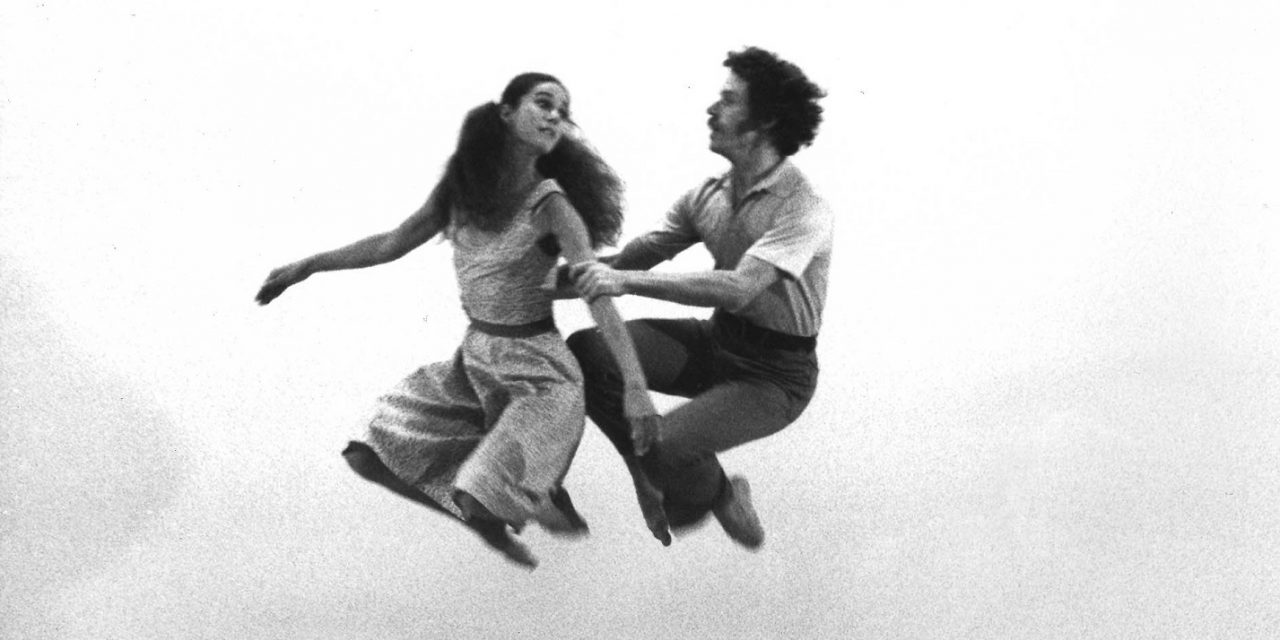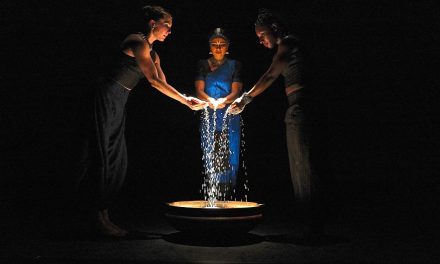Viola’s legacy as an extraordinary teacher lives on not only in the generation of dancers who closely and deeply experienced classes and choreography with Viola, but also in the young dancers who have studied and danced with that first generation of Farber dancers.
Recently an email appeared in my mailbox from professional dancer/choreographer Levizadik (Shadeek) Buckins. He studied with Willie Feuer and me at the ACES Educational Center for the Arts (ECA) in New Haven, CT. Shadeek was a brilliant high school dance student. Shadeek was starting a new teaching assignment at a performing arts high school in Chicago. He described how he was using many of the ideas he learned from Willie and me. I thought to myself, yes, from us, but also truly from Viola Farber.
In the late sixties I was in NYC studying at the Cunningham Studio and working on an MFA at NYU Tisch School of the Arts. I remember my first class with Viola at the Cunningham Studio on 3rd Ave. I did not know what I was doing, but I knew I was hooked. Magically, Viola appeared as a guest choreographer at NYU, and magically, she selected me for her new dance, POP 10. Many of the other NYU students did not understand why I was selected. At that point, my technical skills were not very strong. Lucky for me, Viola saw something in my dancing that she could use in her choreography. Viola’s ability to see each individual dancer/student and to allow their individuality to flourish while she also demanded growth and change was most remarkable. Viola’s classes were always innovative, with something new each day. In the sixties new approaches to choreography and movement creation were in the air, – Viola was not alone in her experimentation. However, very few choreographers were also teaching. Viola created a postmodern technique class. As we experimented with new ideas about choreography and new forms of movement, we also learned how to dance, how to push our technical skills, and to grow beyond our own limitations.
In his article – “Dance History Needs to Remember Viola Farber (1931-1998)” – Jeff Slayton describes Viola’s teaching:
“Farber loved dance and she loved to dance. She was unique in how she danced, and her work helped usher in the Post-Modern Era. She was considered by many to be one of the best teachers of modern dance in America during the years 1968 to 1998. People who kept their eyes and ears open while studying with her, became better teachers. She choreographed her classes and if there was a difficult phrase in the center work of her class, she prepared us for it during the “warm-up” part of the class. She rarely, if ever, threw any surprises at us, but was dedicated to teaching us how to dance, not to simply copy. She also taught us who we were as dancers. Farber taught us to dance like individuals, not like carbon copies of her.”
I could never become a carbon copy of anyone – I tried, it just was not possible. Even as a little girl I was removed from ballet class because I would not copy exactly. I hated Graham technique classes because there did not seem to be room for me to be me. Along came Viola. I was usually lost in Viola’s classes because I truly did not know how to do the combination, but I went for broke and that seemed to be enough to get me through. Viola and I did not have an easy relationship. I was always out of kilter around her and constantly putting my foot in my mouth. But, Viola made me strong and resilient, and she let me be individual. The acceptance and celebration of each dancer’s individuality was a hallmark of her teaching.
Viola certainly treated the members of her company as individuals. The first dance that Willie Feuer was in when he joined the company was titled Willi I. Shortly after that dance, Viola made our first duet and she called it Duet for Susan and Willi. Most of Viola’s choreography had moments when the dancers could make choices about how they danced the given phrase. Keeping the basic shape of the phrase the same, the dancers could turn or jump or change the timing of the phrase. Sometimes the dancers could choose among several phrases in a section of a dance and dance only three of seven possible phrases. Every performance was different and new, every rehearsal was different and new. However, as Viola often firmly implied, we were allowed to explore, but we were also expected to change and grow and dance brilliantly. Having the freedom to choose and explore meant that there were accidents in rehearsal and performance. And, the company had difficulty dancing in unison. But we were always truly alive with energy, spontaneity, and an awareness of each other. Viola’s classes and her choreography required total focus on the moment.
Creating classes that accept each student’s individuality and demand their total focus has been the foundation of my teaching. These ideas are certainly Viola’s legacy. In my Dance Teaching Methods course at Central Connecticut State University I stressed that a teacher should put a moment of “individual voice” into every learning experience. If a teacher does this, even a student who is totally lost will be able to feel in command for a moment or two. These ideas were so important for the high school dance students that I taught at ECA. No matter how strange my classes seemed to the students, no matter how bad their day was before they stepped into class or rehearsal, if you required total focus and moments of individual choice they danced and seemed joyful about what they were learning.
Recognizing each student’s individuality and making sure that each class and rehearsal has space for the students’ individual voice is Viola’s legacy. As Jeff Slayton said, “Farber loved dance and she loved to dance.” Every day Viola demonstrated for her company members and other dancers in class that you cannot teach dance if you do not also dance and choreograph your classes. The objective of every class or rehearsal must be to dance furiously and completely. Viola Farber was an extraordinary teacher, an innovative choreographer, and a remarkable dance artist.
Her legacy dances on.
SUSAN MATHEKE, (BA Wheaton College, MFA NYU Tisch School of the Arts) retired in 2011 after twenty-six years as Chair of the Dance Department at the ACES Educational Center for the Arts in New Haven, CT. From 2007 to 2018 Ms. Matheke was also Adjunct Faculty in Dance Education at Central Connecticut State University. Ms. Matheke was Assistant Professor of Dance at The University of Michigan from 1979 to 1983. She has been a guest artist at Ohio University, Wesleyan University, Harvard/Radcliffe Dance Program, and the National University, Costa Rica. Ms. Matheke was head of the dance program for the Center for Creative Youth at Wesleyan University for many years and has been a member of the faculty of the Graduate Liberal Studies Program at Wesleyan University.
Ms. Matheke performs with her husband, Willie Feuer. They met in Viola Farber’s technique class in 1969 and were both members of the Viola Farber Dance Company during the 1970s. In 1979 they created Dances for 2. Dances for 2 has presented concerts and conducted workshops throughout the United States and Central America. In 1996 Ms. Matheke and Mr. Feuer were selected as recipients of the Arts Council of Greater New Haven Arts Award that recognized “Excellence and Mastery.” Ms. Matheke has received two Individual Artist Grants from the Connecticut Commission on the Arts and was a participating artist in the Commission’s 1995 “Investing in Dreams” project. In 2007 Ms. Matheke was recognized by the Connecticut Dance Alliance for her distinguished service to dance in Connecticut and her contribution to the development of quality dance education at the secondary level.
Willie and Susan now live on Block Island, a small island off the coast of Rhode Island. Most evenings they push the furniture to the edges of their dance space and dance tango.
Featured image: Susan Matheke and Willie Feuer in DON’T RAG ME (1979) – Photo by Jeff Holcombe










